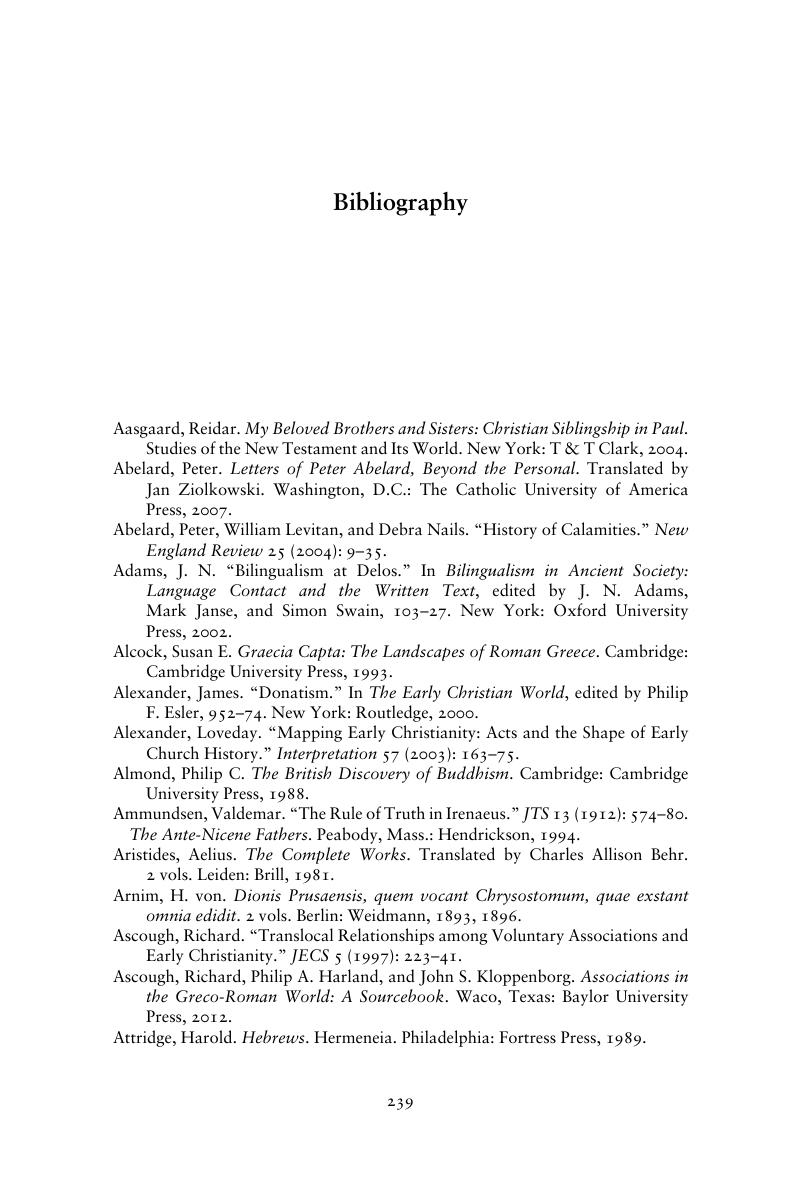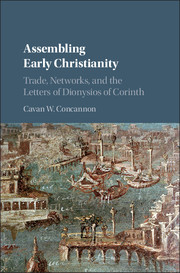Book contents
- Assembling Early Christianity
- Assembling Early Christianity
- Copyright page
- Dedication
- Contents
- Figures
- Tables
- Preface
- Introduction
- 1 Connecting Dionysios: Connectivity and Early Christian Difference
- 2 Placing Dionysios: Corinth in the Second Century
- 3 Defining Dionysios: Ecclesial Politics and Second-Century Christianity
- 4 Debating Dionysios: Sexual Politics and Second-Century Christianity
- 5 Conjuring Crisis: Plague, Famine, and Grief in Corinth
- 6 Responding to Rome: Patronage, Kinship Diplomacy, and Dionysios’ Letter to the Romans
- Conclusion
- Appendix A The Fragments of Dionysios
- Bibliography
- Index
- References
Bibliography
Published online by Cambridge University Press: 05 September 2017
- Assembling Early Christianity
- Assembling Early Christianity
- Copyright page
- Dedication
- Contents
- Figures
- Tables
- Preface
- Introduction
- 1 Connecting Dionysios: Connectivity and Early Christian Difference
- 2 Placing Dionysios: Corinth in the Second Century
- 3 Defining Dionysios: Ecclesial Politics and Second-Century Christianity
- 4 Debating Dionysios: Sexual Politics and Second-Century Christianity
- 5 Conjuring Crisis: Plague, Famine, and Grief in Corinth
- 6 Responding to Rome: Patronage, Kinship Diplomacy, and Dionysios’ Letter to the Romans
- Conclusion
- Appendix A The Fragments of Dionysios
- Bibliography
- Index
- References
Summary

- Type
- Chapter
- Information
- Assembling Early ChristianityTrade, Networks, and the Letters of Dionysios of Corinth, pp. 239 - 260Publisher: Cambridge University PressPrint publication year: 2017



